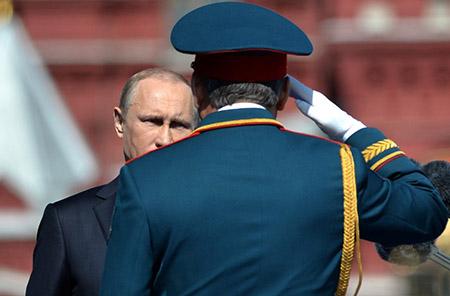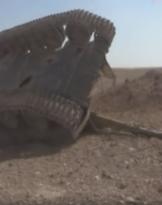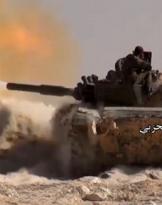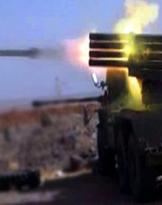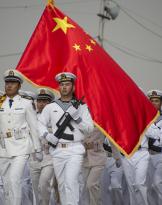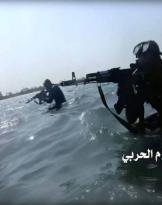We continue to talk about Russia and Ostpolitik under different profiles, often stunned by questionable media filters. More and more often in debates an idea difficult to contest emerges: to think again how we were in the '900 makes the interests of everyone except Europe.
Let's see better.
From the time of Peter the Great to the Putin era, in the collective imagination (and desires) of the Russians two things must be defended on everything: the Russian genome and the Empire.
The count includes the long Soviet period, so much so that at the parade of the 9 May the imperial eagles and red flags parade nearby.
.jpg)
Therefore, Holy Mother Russia is not an imprecation but an idea that flies beyond ideology and generations to power.
Rhetorical approach as desired, but still based on a widely shared feeling.
Whether the imperial logic sinks into the crowning of Vladimir I in Kiev, into the characters of Gogol or into the peasant tradition, is of interest up to a certain point: for the vast majority of Russians the homeland is sacred and must be defended with blood. The current international context invests this idea with a higher value, perhaps unexpected by the Kremlin itself.
Today's Russia, willy-nilly, embodies the defense of princes for centuries the bulwark of the West but which the West itself seems to have grown tired of.
"For the Faith, for the Fatherland and for the Czar" reads the ancient motto of the Cossacks, a variant of the Western "God, Fatherland and Family".
.jpg)
That the Trinitarian vision is divided or one (friction point between Orthodox and Catholics) does not make text. The point is that until recently the slogan was good for masked performances and festivals of the steppe, today it returns strongly between schools, academies and state sponsors that sprout like mushrooms on the territory of the Federation. Especially in the South, where the Caucasian pot reclaimed with the Second Chechen War is always ready to boil to dispel Islamism and separatism.
The recovery of the Cossacks paladins of more conservative Christianity after decades of Soviet persecution, is not a tribute to the folk of the province. It is part of the recovery plan of traditions and consolidation of the national fabric that succeeds in putting together the symbols of pure reaction with the military legacies of the USSR, inevitably still present in Russia. All in all if one thinks that the Empire has no ideology other than itself.
Difficult to accept for the systems that express themselves with the rules of Brussels and the parameters of progress of the Obama administration. The Madonna of the Don and the šaška Cossack are poorly combined with secularization, cultural egalitarianism, multi-ethnic society and the do-it-yourself family, spasmodically horizons chased by the elites in power in the West.
.jpg) Russia, with all its characteristics and contradictions, represents for good and evil an ideological frontier, line of the last flap of traditionalism still alive in the world. At least that able to defend itself.
Russia, with all its characteristics and contradictions, represents for good and evil an ideological frontier, line of the last flap of traditionalism still alive in the world. At least that able to defend itself.
Other small fiefs of traditionalist resistance scattered around the globe have no voice and seem destined to disappear with the cultural thrusts of an increasingly aggressive Global Village.
The new red-brown axis that unites the geographical Europe and the Eurasian interests opposed to the Atlantic dynamics born in the Second World War is a de facto thought.
The end of the Cold War has moved the geopolitical axis, leaving a huge gap in the heart of the Old Continent. In this space, the anti-rhetoric rhetoric conduced by scenarios of real crises serves to keep alive a system of oppositions that essentially plays the United States.
.jpg) Washington knows very well that to close the military bases in Europe it takes a signature but to reopen them, another world war.
Washington knows very well that to close the military bases in Europe it takes a signature but to reopen them, another world war.
The most painless way to maintain the status quo is to feed a continuous Eastern Question, an eternal orphan of an enemy: who better than Russia backward and belligerent?
Whether the bear is red or Russian makes no difference; important is that there is a threatening one to defend against. How much this view is shared by Western public opinion remains to be seen.
Without prejudice to countries directly offended by Russian-Soviet imperialism (Baltic republics and Poland above all) it is difficult to identify a cohesive mass on the new cold war scenarios.
Two examples opposed to each other are valid for everyone:
Hungary remembers from the Soviet tanks of the '56 and historically closer to the princess Sissi than to the bears, today looks at Putin's Russia as a model. The ultra Christian and nationalist Orban does not hide that he is en route to Brussels. Tsipras' Greece, surrounded by accounts and a system not its own, is increasingly tempted by traumatic tears, on which the winds of Moscow blow hard.
.jpg) To be two NATO members, it's not bad.
To be two NATO members, it's not bad.
More than a dusty contrast between East and West, kept alive by the US according to understandable interests, it seems more and more current a clash between modernist cultures, embodied in the sixty-eight generations in power in the West and a cross-bloc (with Russia leader) who tries to re-launch the principles around which European society has revolved for centuries.
It is no coincidence that today's Russia is a nuisance for two ideological areas until yesterday in sharp contrast: the progressive leftist laicist and the liberal democratic bourgeois thought.
Both embodied by the transversal incipit of power in many European countries, often seem to be the expression of systems aimed more than anything else to survive, without the search for a balance of real and lasting values over time.
Giampiero Venturi
(photo: Kremlin / web)

